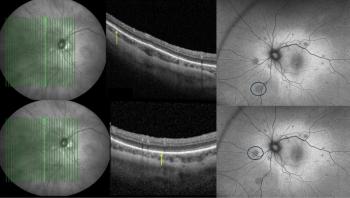
Pentoxifylline could be a significant aspect of detecting OCP.
The cytokine, pentoxifylline, is a safe and effective way to control tumor necrosis factor?a (TNF-a) in conjunctiva affected by ocular cicatricial pemphigoid (OCP).
The cytokine, pentoxifylline, is a safe and effective way to control tumor necrosis factor–a (TNF-a) in conjunctiva affected by ocular cicatricial pemphigoid (OCP), states an investigation published in the European Journal of Ophthalmology.
Dr Mohamed A. El Darouti et al., Department of Dermatology, Kasr Aini Hospital, University of Cairo, Egypt, performed a randomized, controlled, comparative, blinded study on 30 patients with various grades of OCP. They were split into 2 randomized groups of 15- group A received pulse steroid and cyclophosphamide therapy. Group B were administered both pulse steroid and cyclophosphamide therapy and intravenous pentoxifylline.
An additional 20 patients were included as the control and had their serum TNF-a level compared to the OCP patients. All patients were assessed clinically, histopathologically, and serologically before and after therapy.
Significant improvement was seen in group B in the clinical and histopathologic evalutation. The serum TNF-a levels in OCP patients pre-therapy were higher compared to the control cases.
After therapy group B patients experienced a significant reduction in serum TNF-a compared to those in group A with 77.4±26.1 to 19.2±15.6 and 50.3±14.3 to 36.2±18.3, respectively.
The study demonstrates the efficacy of pentoxifylline to pulse steroid cyclophosphamide therapy is successful in controlling OCP by reducing TNF-a levels.
Newsletter
Get the essential updates shaping the future of pharma manufacturing and compliance—subscribe today to Pharmaceutical Technology and never miss a breakthrough.













































